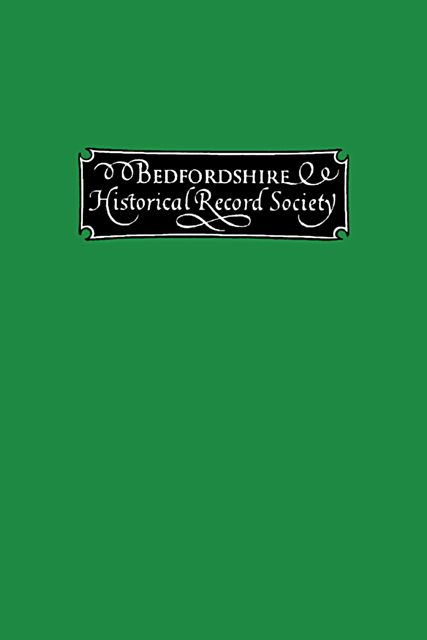Book contents
- Frontmatter
- Contents
- Rules For Transcription
- The Beauchamps, Barons of Bedford, by C. Gore Chambers
- Clerical Subsidies in the Archdeaconry of Bedford, 1390-2 and 1400-II
- Domesday Notes
- A Lease of Caddington Manor in 1299
- Sir William Harper, Knight
- Early Charters of the Priory of Chicksand
- Notes on Two Trades
- The Bedford Eyre, 1202
- Records of Northill College. No. I
- Index
Domesday Notes
Published online by Cambridge University Press: 14 July 2023
- Frontmatter
- Contents
- Rules For Transcription
- The Beauchamps, Barons of Bedford, by C. Gore Chambers
- Clerical Subsidies in the Archdeaconry of Bedford, 1390-2 and 1400-II
- Domesday Notes
- A Lease of Caddington Manor in 1299
- Sir William Harper, Knight
- Early Charters of the Priory of Chicksand
- Notes on Two Trades
- The Bedford Eyre, 1202
- Records of Northill College. No. I
- Index
Summary
INTRODUCTION.
Certain puzzles remain in the Domesday Book for Bedfordshire, even after the publication of text, index, and an introduction by Mr. Round in the Victoria County History, and of Mr. Baring’s “ Domesday Tables,” have cleared up many difficulties.
Chainhalle and Ravensden.
One of these puzzles is the position of the Manor of Chainhalle, in the Half-Hundred of Buchelai. Its site has been regarded (so far as I know, merely from a similarity of sound in the name), as perhaps indicated by Channel End in Colmworth; but Colmworth seems to be already sufficiently accounted for as a five-hide manor. The name of Chainhalle as a manor or other holding, so far as I know, never re-appears after 1086. But when one plots on a map the Domesday tenants-in-chief, it is at once noticeable that in this neighbourhood the only township left blank and unaccounted for is Ravensden. Now Chainhalle was held at Domesday for five hides as a manor by Hugh de Beauchamp of Bedford; and when Ravensden emerges into the dim twilight thrown on the first half of the xmth century by the socalled “Testa de Nevill,” it is held of Hugh’s sue cessor, William de Beauchamp, for five hides and a virgate. The inference is obvious. Chainhalle fills the blank.
Due north of Bedford, in what is now a limb of Goldington, lay the Domesday Manor of Putenhou, the name of which is preserved by Putnoe Farm. Here Hugh de Beauchamp held a manor of four hides, and we read further that he also held, as belonging to this manor of Putenhou, a half-hide in Chainhalle, and in Goldington a virgate. Ravensden touches both Putenhou and Goldington.
Thus, so far as it goes, the evidence is in favour of identifying Chainhalle with Ravensden.
Anschil, Ulmar, and their successors in Bedfordshire.
For consideration of the origins of the great Beauchamp fief, some analytical figures have been worked out, a note on which may save time and trouble to someone else.
The names of two Saxons, who were large holders of land under King Edward the Confessor, appear very frequently in the Beds.
- Type
- Chapter
- Information
- Publisher: Boydell & BrewerFirst published in: 2023

